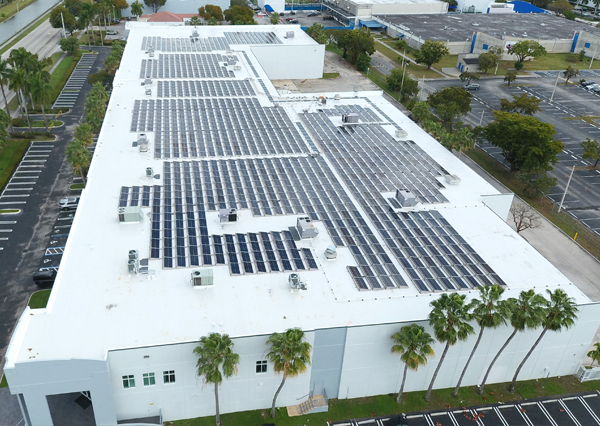Durability, watertight performance, and wind resistance make a sustainable solution for commercial buildings
For decades, PVC (vinyl) roofing membrane has been installed on commercial buildings around the world, totaling billions of square feet. Engineered for long‑lasting performance, PVC shrugs off relentless UV exposure and day‑to‑day weathering while withstanding harsh thermal cycles, powerful wind loads, structural movement, and extreme temperatures. This proven resilience makes it ideal for diverse climates, from humid tropics to icy northern climates.
“A building product like PVC roofing that stands the test of time delivers more than just peace of mind—it reduces maintenance costs, minimizes material waste, and supports environmental sustainability,” said William Bellico, marketing chair for the Coated Fabrics & Film Association – Vinyl Roofing Division (CFFA). “With fewer replacements needed over the life of a building, durable roofing means fewer resources consumed and less hassle along the way.”
What Makes PVC Roofing So Resilient?
According to CFFA, PVC’s durability comes from a combination of advanced materials and engineered performance characteristics:
Watertight Protection. Heat-welded seams create a permanent, watertight bond—superior to adhesives, tapes, or caulks used in other systems. PVC membranes remain sealed even under prolonged exposure to moisture, standing water, alkaline conditions, and biological threats like plant roots, fungi, and bacteria.
Exceptional Fire Resistance. PVC membranes resist ignition, burn slowly, and often self-extinguish once the flame source is removed. Their inherent fire resistance makes them a safer choice for commercial roofing and perfect for use in conjunction with rooftop solar panels.
Wind Uplift Performance. PVC roofing systems meet or exceed wind uplift standards and have withstood hurricanes and severe weather events. They’re a trusted option in storm-prone areas—so much so that even NOAA chose PVC for its own National Hurricane Center.
PVC roofing membranes are made from a flexible, tear- and water-resistant polymer, reinforced with fiberglass mats or polyester scrims. This construction ensures excellent dimensional stability and durability, allowing the membrane to adapt to building expansion, contraction, and other stressors over time.
Durability is Sustainability
A long-lasting roof not only reduces material usage over the life of a building, it also minimizes landfill waste and helps lower the overall carbon footprint. PVC roofing stands out for its exceptional resistance to weathering and UV degradation, maintaining integrity and performance even in harsh conditions. For commercial property owners and sustainability-minded specifiers, this durability—combined with proven environmental benefits—makes PVC an unmatched choice for long-term value.
To learn more about PVC roofing durability, visit https://vinylroofs.org/.


